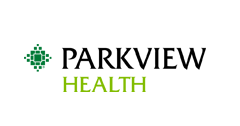Abstract
Introduction- The Coronavirus Disease-2019 (COVID-19) caused by the novel SARS-CoV-2 led to significant strain on the Emergency Department (ED) visits worldwide. Multiple stay-at-home orders were issued during the pandemic unless medical treatment was urgently needed1 . Acute esophageal obstruction (AEO) due to food/ foreign body impaction usually present to the ED, given its severe symptoms. Most esophageal foreign bodies pass through the gastrointestinal (GI) tract uneventfully, and related mortality is very low. Still, most of these patients receive endoscopic interventions (up to 76%)2 . The number of non-urgent endoscopies plummeted sharply during the pandemic to reduce exposure and preserve personal protective equipment. It is unclear if ED visits for AEO and their endoscopic management changed due to the COVID-19 pandemic in the United States (US). Methods- We utilized a federated cloud-based network database named TriNetX, which provides access to electronic medical records from 92 healthcare organizations from the US. The AEO adult patients hospitalized from January 1, 2020, to December 1, 2020, were compared to a similar timeline in 2019 from TriNetX. We used ICD-10 codes for food/foreign body in esophagus, causing other injury acute food impaction (T18.128 A, T18.12), foreign body esophagus (T18.198, T18.1, T18.19, T18.108, T18.108A). Outcomes of the study included utilization rates of esophagogastroduodenoscopy (EGD), esophageal perforation, inpatient hospitalization, and mortality. The outcomes were measured before and after 1:1 propensity matching of the groups based on the baseline demographics and comorbidities. Results- Prevalence of AEO among all ED visits in 2020 were 0.12% (5890 AEO ED visits among 4,672,024 total visits), compared to 0.17% (23,478 AEO ED visits among 14,199,648 total visits) in 2019. There was a small but significant decrease (0.05%) in AEO ED visits from pre-pandemic compared to pandemic times (P<0.01). Patient with AEO had higher prevalence of eosinophilic esophagitis (mean 270 [4.6%] vs. 885 [3.8%], p=0.004) and alcohol-related disorders (mean 465 5 [7.9%] vs. 1659 [7.1%], p=0.03) in 2020 group vs. 2019 group. Patients in the 2020-group had a lower EGD utilization (RR 0.63,95%CI:0.58–0.67, p<0.001) but esophageal perforation (RR 0.87,95%CI:0.41–1.82) and inpatient hospitalization rates (RR 0.92,95%CI:0.79-1.05) did not differ between two groups. Interestingly, during the pandemic, the AEO patients had a lower mortality rate (RR 0.23, 95%CI:0.17–0.31, p<0.001) than in 2019. ConclusionWith the advent of COVID-19, multiple stay-at-home orders were issued in the US, with widespread healthcare services and utilization disruption. Patients have expressed concerns about visiting healthcare facilities due to the potential of the spread of SARS-CoV-2 3 . Many GI societies also recommended deferring elective procedures. This was due to a concern for potential transmission of the virus from aerosolization of GI secretions and judicious use of PPE, which resulted in an overall reduction in the number of endoscopies during the pandemic4 . Our study shows a small reduction (0.05%) of AEO ED visits in 2020 compared to 2019. However, EGD utilization plummeted to 63% for AEO in 2020. If this is due to spontaneous resolution of the food impaction or reduced presentations to the ED needs to be studied prospectively.
See: Table 1: Baseline characteristics, laboratory findings and clinical outcomes of the patients with Acute Esophageal Obstruction (AEO) ingestion during the COVID-19 pandemic (2020) when compared with pre-COVID time (2019)
Document Type
Article
Publication Date
2021
Recommended Citation
Goyal, Hemant MD FACP; Perisetti, Abhilash MD FACP; Gajendran, Mahesh MD MPH FACP; Ali, Aman MD; and Sharma, Neil MD, "COVID-19 and Acute Esophageal Obstruction Management in the Emergency Department: An U.S. multicenter research network propensity-matched analysis" (2021). Other Specialties. 8.
https://researchrepository.parkviewhealth.org/other/8


Comments
Manuscript Draft Version